hercule florenceinvents
zoophony
In the manuscript L'Ami des Arts [The Friend of the Arts] Hercule Florence writes: “It would be necessary to have traveled like me for more than three years in the vast deserts of Brazil, to know the impression made by the voice of a host of animals that make themselves heard by sounds so different from each other.”
The encounter with Brazilian nature, in all its visual and sonic exuberance, was what inspired Hercule Florence to develop zoophony. Besides realizing that the animals’ vocalizations are specific to each species, each message (mating, defense of territory, etc.) and each gender (male, female), Florence developed a method of transcribing “animal voices” by means of traditional musical signs (instead of the onomatopoeic system used until then).
Click to enlarge
![FLORENCE, Hercule - [Page 107 of the manuscript “L’Ami des arts livré à lui-même...”] - 1837-1859 - Ferrogallic ink and pencil on paper - 30.6 x 21.0 cm - Institute Hercule Florence Collection (São Paulo) - Photo: Heitor Florence.](/images/inventos/zoofonia/zoofonia-L-Amie-des-Arts_pag-107.jpg) FLORENCE, Hercule
FLORENCE, Hercule [Page 107 of the manuscript “L’Ami des arts livré à lui-même...”] - 1837-1859 - Ferrogallic ink and pencil on paper - 30.6 x 21.0 cm - Institute Hercule Florence Collection (São Paulo)
Photo: Heitor Florence.
[Page 107 of the manuscript “L’Ami des arts livré à lui-même...”] - 1837-1859 - Ferrogallic ink and pencil on paper - 30.6 x 21.0 cm - Institute Hercule Florence Collection (São Paulo)
Photo: Heitor Florence.
![FLORENCE, Hercule - [Page 108 of the manuscript “L’Ami des arts livré à lui-même...”] - 1837-1859 - Ferrogallic ink and pencil on paper - 30.6 x 21.0 cm - Institute Hercule Florence Collection (São Paulo) - Photo: Heitor Florence.](/images/inventos/zoofonia/zoofonia-L-Amie-des-Arts_pag-108.jpg) FLORENCE, Hercule
FLORENCE, Hercule [Page 108 of the manuscript “L’Ami des arts livré à lui-même...”] - 1837-1859 - Ferrogallic ink and pencil on paper - 30.6 x 21.0 cm - Institute Hercule Florence Collection (São Paulo)
Photo: Heitor Florence.
[Page 108 of the manuscript “L’Ami des arts livré à lui-même...”] - 1837-1859 - Ferrogallic ink and pencil on paper - 30.6 x 21.0 cm - Institute Hercule Florence Collection (São Paulo)
Photo: Heitor Florence.
Whereas the term “zoophony” did not catch on, Hercule Florence pioneered the field (without any equipment to help him capture and analyze the sounds) that would eventually become known as Bioacoustics, a subject that became well established in the 1960s.
The challenges he encountered producing the treatise in which he described the process of zoophony led Florence to eventually learn about engraving and printing methods. From then on he devoted himself to graphic techniques and, in 1830, he idealized Polygraphy and, later, in 1833, the most important of all of his discoveries, photography. In 1831, R. Ogier published Recherche sur la voix des animaux, ou essai d'un nouveau sujet d'études, offert aux amis de la nature [Research on the voice of animals, or essay on a new subject of study, offered to friends of nature] a sixteen-page booklet detailing his zoophony method.
![FLORENCE, Hercule - [Sapo] Rio-Pardo, 27 Aoút - 1826 - Aquarela sobre papel - 24,2 x 18,3 cm - Coleção Arquivo da Academia de Ciências (São Petersburgo)](/images/inventos/zoofonia/zoofonia-Anfibeos-e-Repteis_01.jpg) FLORENCE, Hercule
FLORENCE, Hercule [Sapo] Rio-Pardo, 27 Aoút [August 27] - 1826 - Watercolor on paper - 24.2 x 18.3 cm
Archives of the Academy of Sciences Collection (St. Petersburg).
[Sapo] Rio-Pardo, 27 Aoút [August 27] - 1826 - Watercolor on paper - 24.2 x 18.3 cm
Archives of the Academy of Sciences Collection (St. Petersburg).
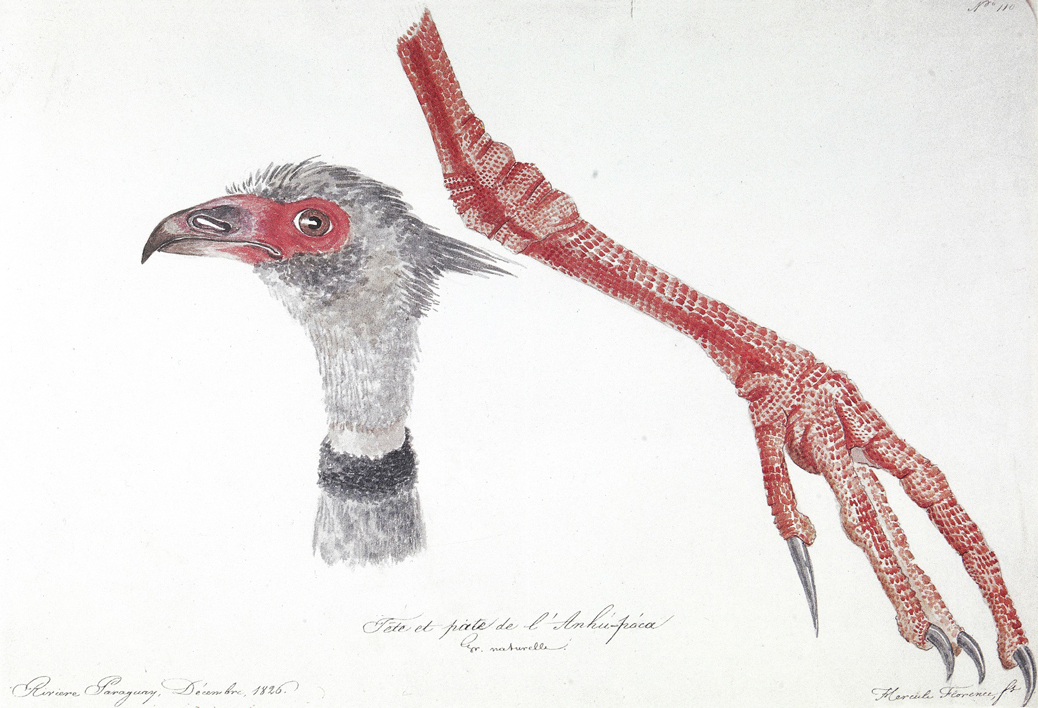 FLORENCE, Hercule
FLORENCE, Hercule Tête et patte de l'Anhú-póca - 1826 - Watercolor on paper - 28.2 x 42.3 cm
Archive of the Academy of Sciences Collection (Saint Petersburg).
Tête et patte de l'Anhú-póca - 1826 - Watercolor on paper - 28.2 x 42.3 cm
Archive of the Academy of Sciences Collection (Saint Petersburg).
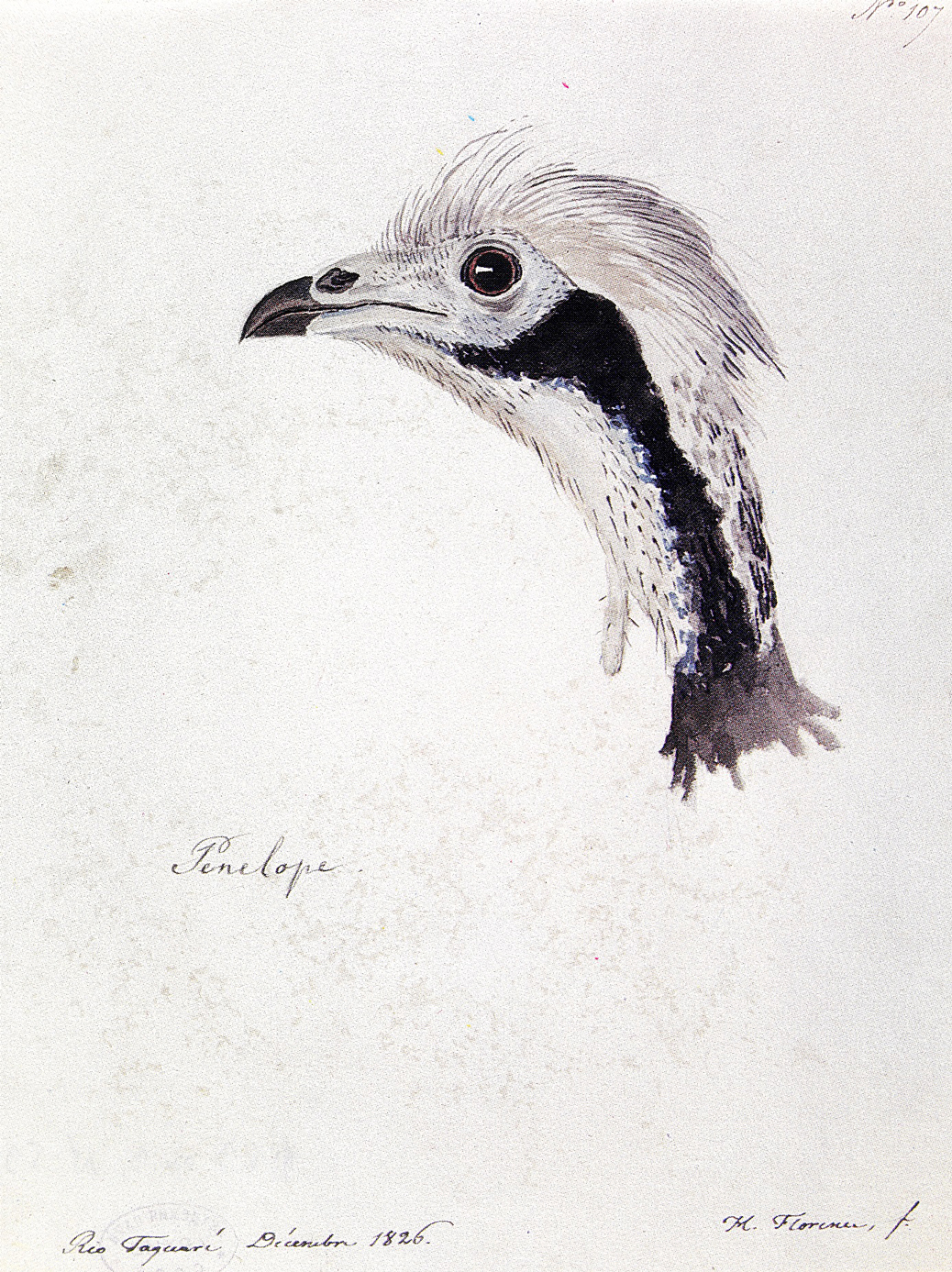 FLORENCE, Hercule
FLORENCE, Hercule Penelope. - 1826 - Watercolor on paper - 24.7 x 18.5 cm
Archives of the Academy of Sciences Collection (St. Petersburg).
Penelope. - 1826 - Watercolor on paper - 24.7 x 18.5 cm
Archives of the Academy of Sciences Collection (St. Petersburg).
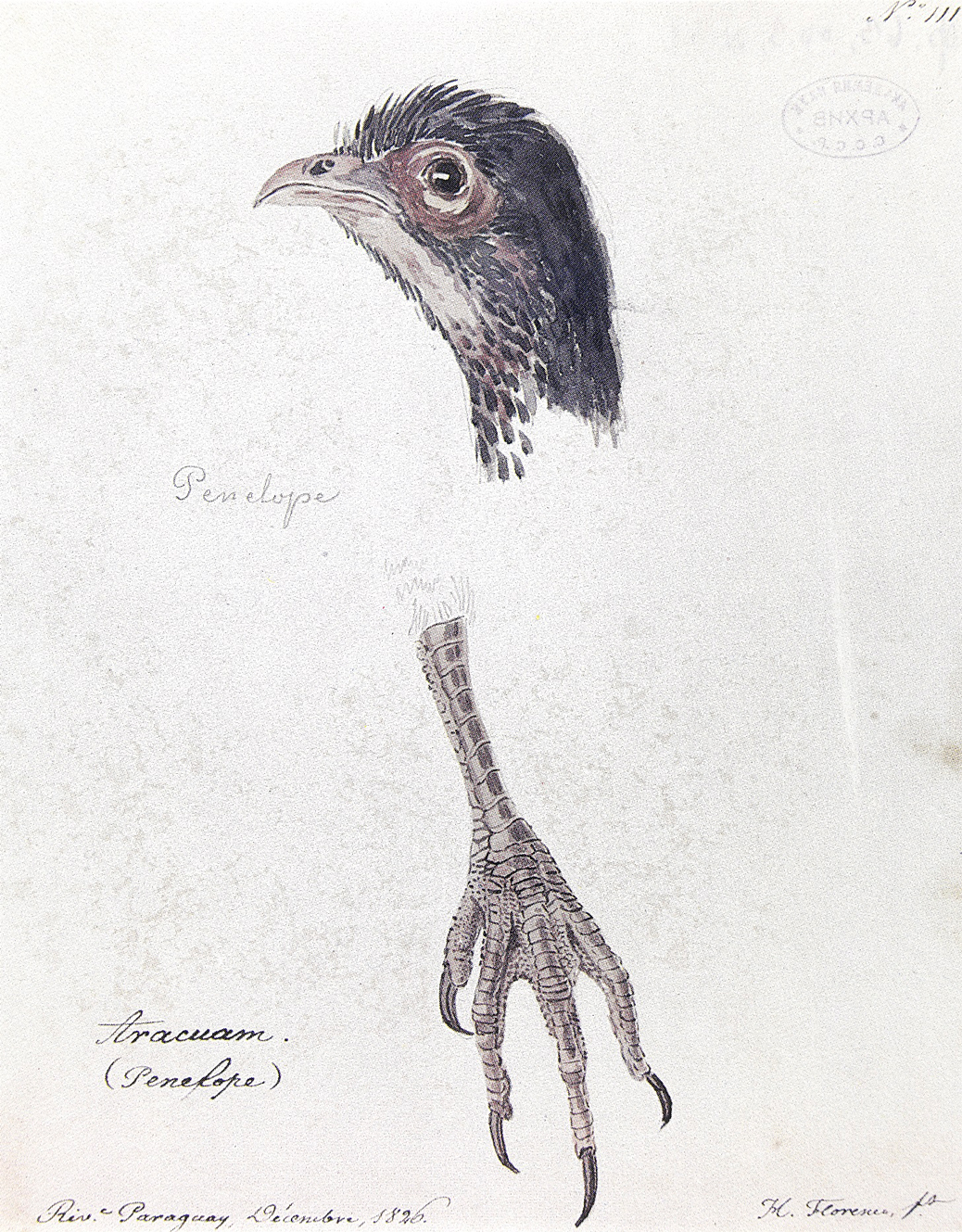 FLORENCE, Hercule
FLORENCE, Hercule Arachuam (Penelope) - 1826 - Watercolor on paper - 23.4 x 18.6 cm
Archive of the Academy of Sciences Collection (St. Petersburg).
Arachuam (Penelope) - 1826 - Watercolor on paper - 23.4 x 18.6 cm
Archive of the Academy of Sciences Collection (St. Petersburg).
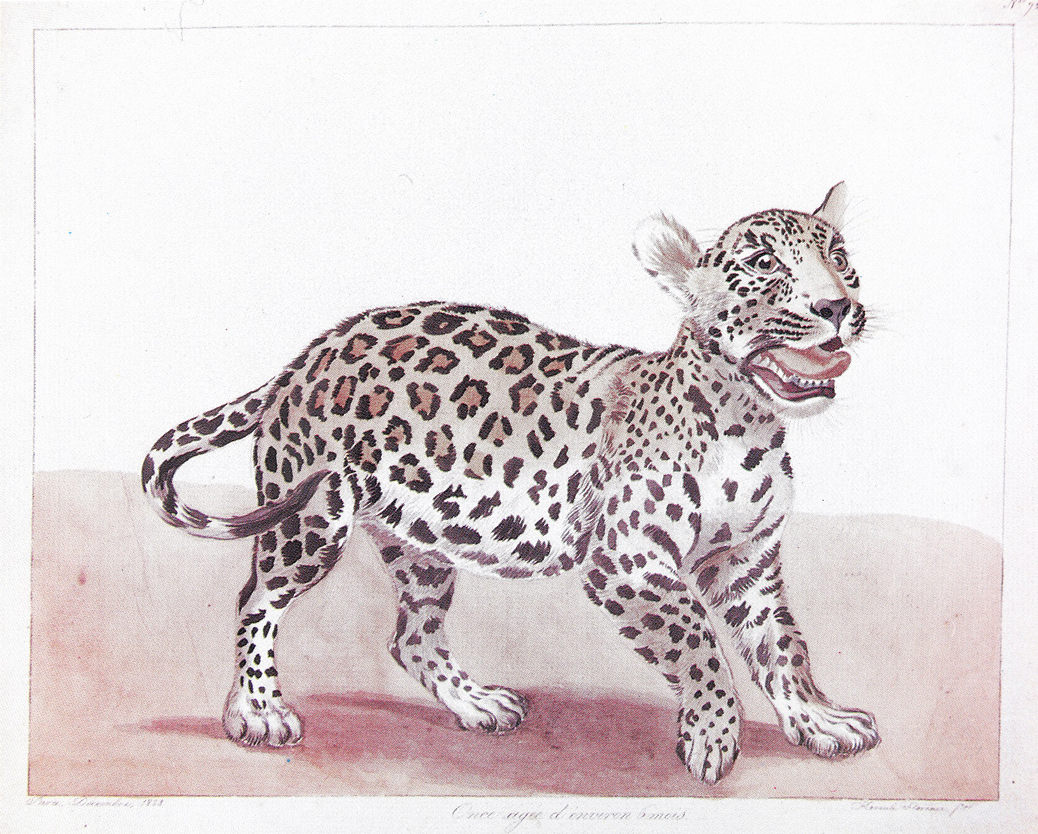 FLORENCE, Hercule
FLORENCE, Hercule Once agée d'environ 6 mois - 1828 - Watercolor on paper - 39.2 x 40.4 cm
Archive of the Academy of Sciences Collection (St. Petersburg).
Once agée d'environ 6 mois - 1828 - Watercolor on paper - 39.2 x 40.4 cm
Archive of the Academy of Sciences Collection (St. Petersburg).
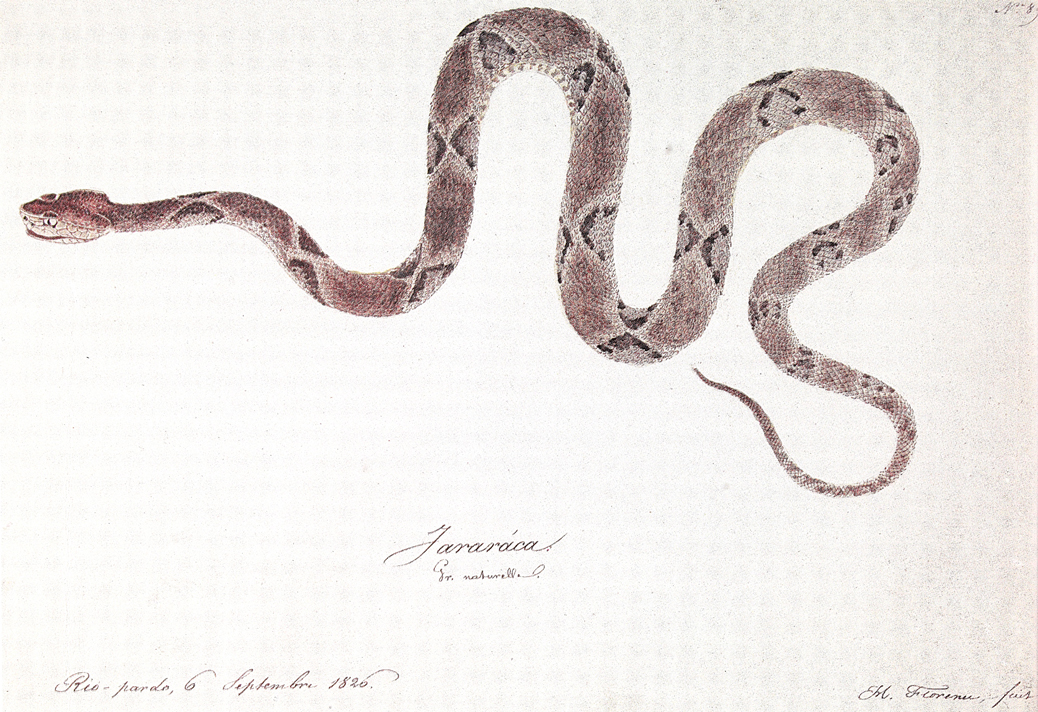 FLORENCE, Hercule
FLORENCE, Hercule Jararáca Gr. naturelle - 1826 - Watercolor on paper - 24.5 x 36 cm
Academy of Sciences Archive Collection (Saint Petersburg).
Jararáca Gr. naturelle - 1826 - Watercolor on paper - 24.5 x 36 cm
Academy of Sciences Archive Collection (Saint Petersburg).
RECOMMENDED LITERATURE:
- TOLEDO, Luís Felipe e ARAÚJO, Carlos Barros de. “Zoophonie: les origines de la bioacoustique. » in Hercule Florence. Le Nouveau Robinson. Milan: Humboldt Books / Monaco: Nouveau Musée National de Monaco, [2017]. p. 264-285.
- VIELLIARD, Jacques M. E. (org.). A zoophonia de Hercule Florence. Cuiabá: UFMT Editora Universitária, 1993.
- Hercule Florence e o Brasil: o percurso de um artista-inventor. [São Paulo]: Pinacoteca do Estado, [2009]. (catálogo de exposição).
